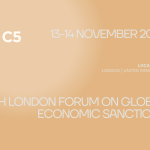The shift from voluntary initiatives to mandatory sustainability regulation has transformed the compliance profession. What do you think are the most underestimated implications of this shift for companies and regulators alike?
The sustainability regulations landscape has been in steady development in the past years, especially in the past half a decade. A large part of the voluntary-to-mandatory shift follows the EU’s strategic orientation to be a first mover in legislating in the areas of sustainable finance and wider sustainability matters.
This approach was adopted for multiple reasons – to reinforce the region’s sustainable development goals and ambitions, level the playing field for investors, meet the interests of stakeholders for more transparency, and bring a competitive edge to the EU. Outside the EU, we have also witnessed such moves in other jurisdictions, indicating a shift beyond social responsibility and voluntary actions.
The implementation of this mandatory approach to sustainability is still in its early stages and it indeed has multiple implications, for both companies and regulators alike.
One that comes to mind is the magnitude of the shift. The sustainability initiatives have a transparency component – which is visible though the reporting requirements that they bring. However, the purpose of these initiatives is not to write more reports – rather to bring systemic, transformative changes in which the attention given to financial and sustainability information is levelled.
For companies, that would mean obtaining a better understanding of their business models and new risks stemming from their environments, allowing for better decision making in investing and business strategy.
For regulators, obtaining comparable sustainability information on issues such as climate change, biodiversity, and labour issues feeds into the evidence base for policy decisions that act on those risks, impacts, and opportunities now and in the future – for example, on capital requirements on certain exposures for the financial services sector.
As for competence needs, sustainability and associated legislation are rather new for all actors in the ecosystem. Very few of the professionals that are engaged in the corporate, regulatory or civil society sectors today have received sustainability-related training as part of their formal education simply because this was not part of the curricula at the time.
Yet, with the evolution of sustainability regulation, the roles of all these actors change – risk and compliance experts, advisors, auditors and regulators are now expected to show proficiency in sustainability matters to, for example, understand climate change, provide financial advice to consumers, recognise a company’s impact on child rights beyond child labour, participate in stakeholder dialogues, or provide assurance.
The gap between competence and expectations gets wide and despite efforts from individual actors, a whole-of-society approach would be needed – starting with learning about sustainability in school.
Among the Taxonomy, Corporate Sustainability Reporting Directive (CSRD), and the Corporate Sustainability Due Diligence Directive (CSDDD), which regulation do you see as the most transformative – and why?
All three have a role to play – the Taxonomy Regulation sets criteria for assessing if an economic activity is environmentally sustainable, the CSRD standardises sustainability reporting for companies in scope following the double materiality approach, and the latest CSDDD requires that large companies identify environmental and human rights risks in certain parts of their value chains and take action to prevent, mitigate, and minimise or end adverse impacts, as well as provide remediation.
These three files then in turn provide information for financial market participants and advisors to assess the sustainability of their portfolios. While they are interconnected, from today’s point of view these files are not yet perfectly aligned.
Still, if I must pick one, I would highlight the CSDDD. This is because while the Taxonomy Regulation and the CSRD are milestones in how far sustainability regulation has come, the CSDDD in addition to transparency also sets behavioural expectations from the entities in scope. This means that understanding and reporting on the adverse impacts on communities and/or the environment is not enough without action – companies are required to, based on the findings in their risk assessment, take effective action in preventing, minimising, or ending actual potential adverse impact, while engaging with stakeholders in the process.
Given the global reach of these EU regulations, even to third-country companies, how do you see this influencing international compliance and supply chain dynamics? And how are companies managing the burden?
The ‘smart’ aspect of these regulations is that they are market-based – they apply not only to EU companies but also to third-country/non-EU companies that are present on the EU market that fulfil the thresholds individually or on group level. For example, companies in the US, UK, Japan etc. that meet the thresholds would also be in scope just as EU companies.
This also means that risk and compliance professionals face an additional challenge in navigating a new and complex regulatory field, even if they are not based in the EU. Suppliers from, for example, the Western Balkans, Asia and Africa and their practices could also be indirectly affected with these initiatives.
At the same time, the so-called ‘Brussels effect’ of EU regulations has been visible in global supply chains, with companies becoming interested in the effects of these regulations, especially the CSDDD, while other jurisdictions are looking into establishing their own mandatory rules. These regulations would also bring benefits to the stakeholders and communities, including those most vulnerable, who may be adversely affected by environmental or human rights harms.
The strength of the regulatory requirements and the impact to the supply chains will at the end depend on how well they are understood and implemented. Instead of a burden, these regulations should be welcomed as they can help companies and compliance professionals get a more holistic view and use the information from carrying out their double materiality analysis or risk assessment across their value chains as an early warning system and additional resource for strategy setting and risk management.
What does not get enough recognition, especially in the context of global supply chains, are the accompanying measures and various financial and non-financial programmes, that are or will be available for stakeholders and those indirectly affected by the impact of these regulations – and which should be seized by all parties.
The EU’s recent Omnibus proposal aims to ‘simplify’ sustainability regulation. Do you view this as a necessary streamlining effort or a step toward deregulation in disguise that could erode risk transparency and corporate accountability?
In an EU context, the simplification and streamlining effort is not new. If we look back to the financial crisis of 2008-2011 which was characterised by a massive roll-out of financial regulation aimed at stabilising the market, we notice that what followed was an initiative to streamline and provide policy coherence.
When sustainability legislation started to emerge in 2018-19, it was already a strategic decision by the EU to start with climate and address other environmental and social issues at a later stage, and to align the various legislative pieces later – so streamlining is not a surprise.
This time around, though, following a changed political climate, the ‘how’ of the streamlining effort is what is debatable. Many have found the ‘omnibus’ to be an unusual choice of instrument to achieve the goal of streamlining the reporting requirements.
While the EU’s tone from the top has ensured that this is a simplification exercise and that the goals of the legislation will not be watered down, the proposal that the European Commission presented on February 26th is not short of challenges that could point in the opposite direction.
At the moment, it is too early to say what the final outcome will be – the legislative procedure and the work of EFRAG to simplify the ESRS are set to continue during this and next year at the least. The ambition of the sustainability regulations that have been closely negotiated for many years should stay untouched while simplification, where it serves the legislations’ goals, should be taken on board.
As someone passionate about sustainable finance, what innovations do you believe are most needed, or already gaining traction, to channel capital more effectively into the green transition?
I am pleased to see that, in parallel to addressing climate change, the focus is now shifting to other environmental risks, such as biodiversity and water, which hold great significance in transition finance.
In an EU context, the upcoming review of the Sustainable Finance Disclosure Regulation (SFDR) would be significant in shaping the future of sustainable financing in the EU – notably in a different political environment than when the Regulation was first introduced.
At the same time, I am also a proponent for the social side of the sustainability agenda, which has arguably gotten a much smaller spotlight. We rarely see social investments as a standalone, dedicated topic or initiative. Frequently, the ‘social’ is in function of climate-centred investments or seen through the scope of a ‘minimum safeguard’.
The COVID-19 pandemic shed light into the need to discuss social investments more broadly, and in the multi-crisis that we have been experiencing, the need for progressing in social investing is more urgent than ever.
Looking ahead, what emerging trend – be it regulatory, technological, or financial – do you believe will define the next phase of sustainability in Europe?
In the next period, the Omnibus and its aftermath will certainly stay in the focus. Despite these uncertainties, my message here is that sustainability and sustainability risks should remain in focus for the private sector.
These risks are here to stay, and their magnitude will not diminish if they are left unassessed or due to regulatory changes. Many compliance specialists are familiar with ‘what gets measured, gets managed’ – but you can only measure what is on your risk radar. Looking away from sustainability risks will only keep companies in the dark.
On another note, this 2.0 era of sustainability will see a greater convergence between technology and sustainability, as well as focus on new technologies and innovation, paired with more transactional partnerships, as seen in the international scene and signalled by the EU with the upcoming Multiannual Financial Framework.
Lastly, the power of impact investing is large and not fully tapped – as one of the rather less regulated areas, I find impact investing to be of great value-add and of transformative power out there, and I hope that it will capture even more attention in the years to come by companies, the financial services sector, and regulators alike.

Vasilka Lalevska is an economist with almost a decade of experience in European and global advocacy on sustainable finance and ESG issues, as well as sustainability strategy and regulatory forecasting. Leading up to that, most of her professional experience came from civil society organisations, trade unions and the private sector, where she has worked on high-level influencing and advisory on policy issues affecting the financial sector, sustainability, public health, and children and youth. She recently worked as Child Rights and Corporate Sustainability Advisor at Save the Children, with responsibilities to lead the EU influencing on sustainability files, providing key input to funding opportunities, support for corporate partnership teams and shaping the sustainable finance work for the organisation. Before Save the Children, Vasilka worked as Sustainability/ESG Manager at KPMG, Policy Director at the Climate Safe Lending Network and Head of EU Affairs/ Sustainable Finance Lead at the Nordic Financial Unions (NFU). She is a North Macedonian-Swedish national and is based in Stockholm.







